Quick charging station for commercial
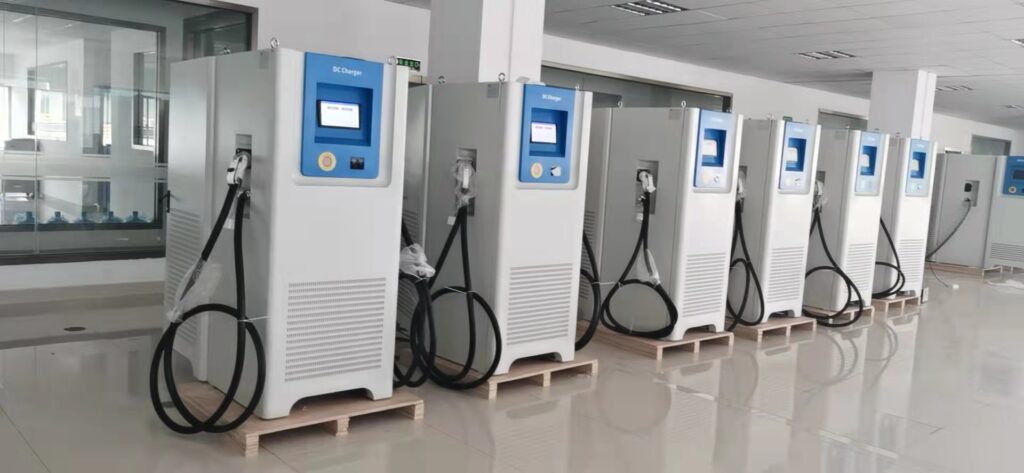
the power from 30kW to 480kW
All stations have TUV certificate
We accept all customization for your special request like brand, extra function.etc.
It suitable for most of commercial charging


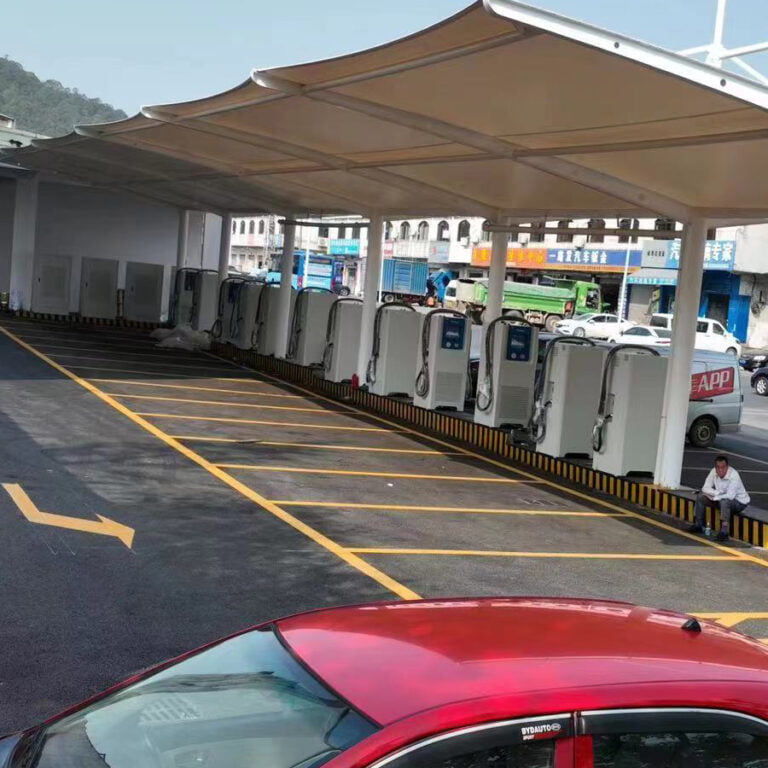
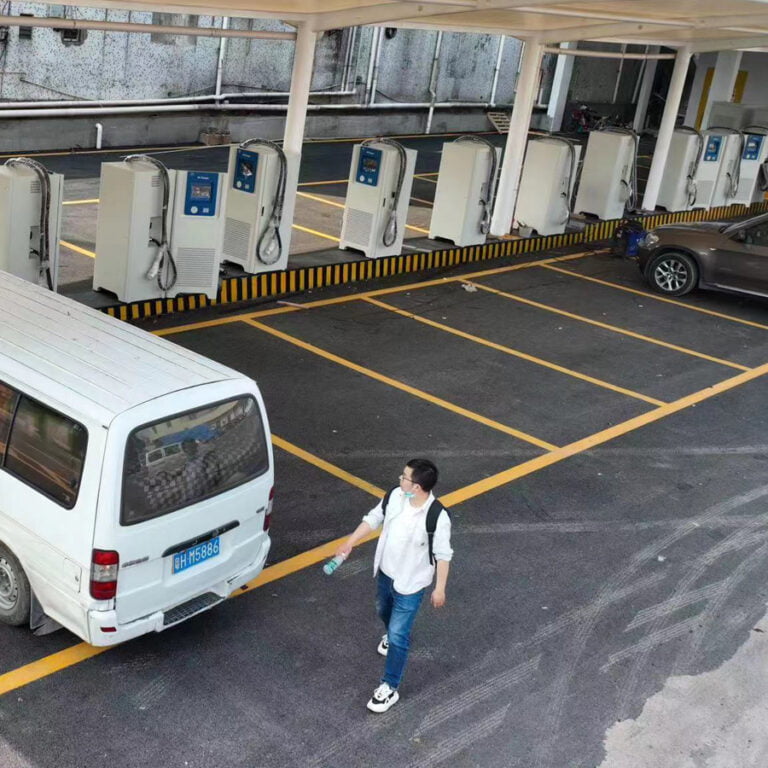
We accept any customzation for your demands
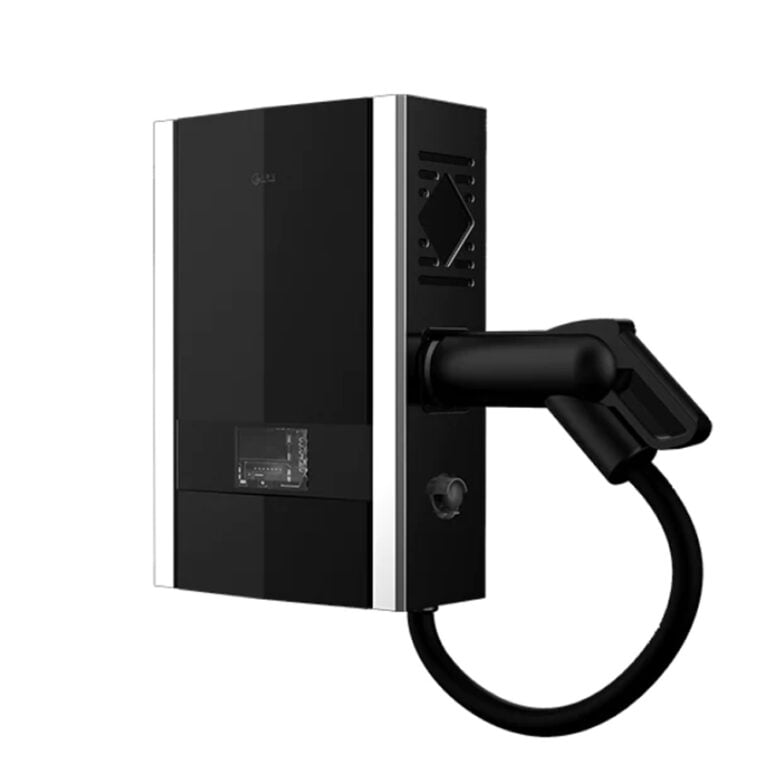
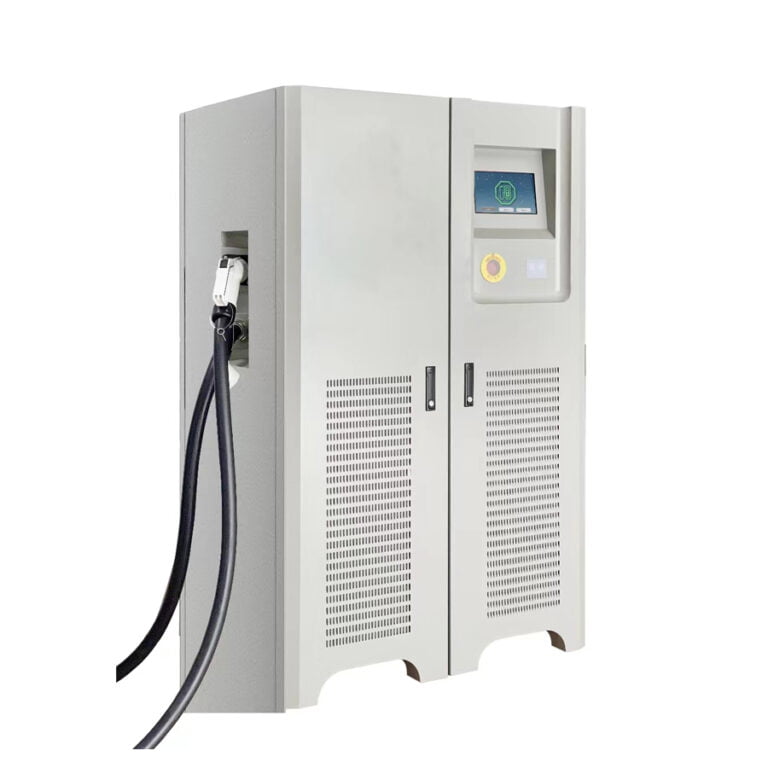
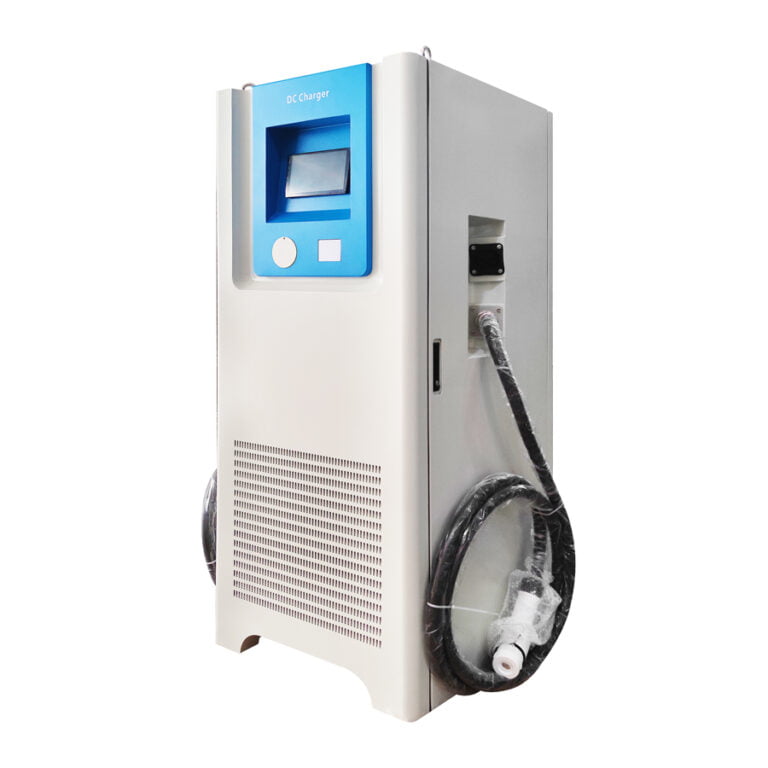

| item | answb071000 | answb151000 | answb201000 | 3p120k-d2-200a-eu01 | 3p150k-d2-200a-eu01 | 3p180k-d2-200a-eu01 |
|---|---|---|---|---|---|---|
| input rating | 200-1000v 3ph100amax | 200-1000v 3ph120amax | 200-1000v 3ph180amax | |||
| number of phase/wire | l2+l3+pe(nema,jps),l+n+pe | 3p+n+pe | 3ph/l1,l2,l3,pe | |||
| power factor | >0.98 | |||||
| current thd | <5% | |||||
| efficiency | >95% | |||||
| output power | 30kw | 40kw | 60kw | 120kw | 150kw | 180kw |
| output rating | 200-1000vdc | |||||
| protection | over current,under voltage,over voltage,residual current,surge protection,short circuit,over temperature,ground fault | |||||
| display | 9”touch screen | |||||
| support language | english(other languags available upon request) | |||||
| charge option | charge options to be provided upon request:charge by duration,charg by energy,charge by fee | |||||
| charging interface | ccs2,cha demo,gbt,ccs1 | |||||
| user authentication | paypal and (or) nfc card | |||||
| network interface | ethernet(standard);wi-fi,4g(optional) | |||||
| ocpp | ocpp1.6/ocpp2.0 | |||||
| operating temperature | minus20℃to+55℃(derating when over 55℃) | |||||
| storage temperature | -40℃to+70℃ | |||||
| humidity | <95%relative humidity,non-condensing | |||||
| altitude | up to 2000m(6000feet) | |||||
| ingress protection | ip54 | |||||
| enclosure protection against | ik10 according to iec62262 | |||||
| external mechanical impacts | ||||||
| cooling | forced air | |||||
| charging cable length | chargergun:5m(chademo),5m(ccs),5m(gb/t)customized acceptable | |||||
| dimension(w*d*h)mm | 548×378×160 | |||||
| weight | 50kg | 55kg | 80kg | 360kg | 390kg | 450kg |
| certificate/compliance | ce,rohs,tuv | |||||
Some questions about this product
All stations have CE certificate.
OCPP JSON1.6, WIFI,4G
yes, we accept cuatomization for languages and others demands.
If clients don’t have payment system, we have Nayxy system.
Yes, we will send full document and technical support for charging stations installation.
Normally the lead time need about 30 days.
Yes, the station can assemble with CCS 2, CCS 1, CHAdeMO, GBT plug.
not yet, we only have station hardware and Nayax payment system.
Select your suitable application scenario

Our 180kW charging stations are now featured at the Skywell exhibition center in Azerbaijan, supporting Skywell's electric bus operations with rapid, efficient, and safe charging solutions. This partnership highlights our commitment to advancing sustainable transportation by seamlessly integrating our high-power charging technology with Skywell's eco-friendly buses, ensuring they're always ready for the road.

Discover our groundbreaking DC charging station project featuring a 30kW unit, optimally installed in a bustling supermarket parking lot in Brazil. Engineered for convenience, this cutting-edge station boasts an adaptable design allowing for an upgradeable output of up to 60kW, catering to a wide range of electric vehicles. Designed with user convenience in mind, it ensures a swift and seamless charging experience, enabling shoppers to efficiently power their vehicles while they browse.

Our latest project features a 100kW DC charging station installed at a transportation company, providing fast and efficient charging for their electric truck fleet. Customer feedback highlights its convenience and high efficiency, making it a valuable asset for their operations and a significant boost to their productivity. This initiative showcases our expertise in delivering effective charging solutions tailored to the demanding needs of commercial fleets.
After reading the introduction about 3D LED display, you must still have many questions. The following are some questions that we have counted the most customers interested in over the past 3 years. I hope it will be helpful for you.
The Electric Vehicle DC Charger, also known as DC charging station and DC wallbox, is a specialized device designed for charging electric vehicles. Unlike regular household Alternating Current (AC) chargers, the electric vehicle DC charger provides Direct Current (DC) to quickly recharge the electric vehicle’s battery.
Electric vehicle DC chargers are typically utilized at fast-charging stations strategically placed in various locations such as highway service areas, shopping centers, parking lots, and more. The use of DC chargers significantly reduces the charging time for electric vehicles, enhancing overall charging efficiency. This is particularly beneficial for electric vehicle owners on long-distance journeys or situations requiring a rapid recharge.
These chargers often require specific plugs or connectors to accommodate various brands and models of electric vehicles. Additionally, they typically feature higher power outputs to support fast charging.
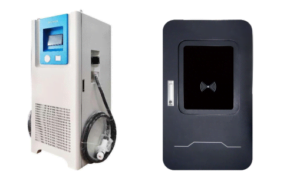
According to the power size is mainly divided into: 20kw, 30kW, 60kW, 120kW, 150kW, 180kW, 240kW and other and more powerful charging pile. Depending on the circuitry of each country, we will also recommend more specialised charging stations. Currently our largest EV charging cable is 400kW, and 300 kW and above can be recharged to 80% of its capacity in 15-20 minutes.
According to the charging gun to be classified: single gun and double gun (CCS1/CCS2/GBT/CHAdeMO can be chosen), the mainstream is double gun, of course, in addition to the double gun can have more guns; for example, increase the AC cable, at the same time to meet the fast charging and slow charging. Dual gun charging pile can be divided into wheel charging and equal charging, for example, 180kW charging pile, when charging only one car, the power on one gun is 180kW, that is, it belongs to wheel charging; when charging two cars, the power on two guns is 90kW, that is, it belongs to equal charging. The power of two guns is 90kW respectively when charging two vehicles, which is equal charging.
DC charging pile can be divided into one-piece type and split type according to the structure form. Integral type is the component unit of charging pile is one; Split type will control unit, billing unit, charging interface, human-machine interactive interface and other parts of the separate to do together, in addition to charging the gun in addition to the weak part of the circuit, the power unit of the charging module, the strong part of the distribution circuit part of the centralised in together.
The charging process of a DC charging station involves applying a constant high current to the battery at a constant DC voltage. The voltage across the battery gradually increases, reaching a specified level where the battery voltage matches the nominal value. When the State of Charge (SoC) reaches 95% or above (varies for different batteries), the charging transitions to a constant-voltage, low-current phase. If time permits, a lower current may be used to “top off” the battery.
To implement this charging process, the charging station requires a DC charging module to provide the DC power source. It also needs a charging station controller to manage functions such as power on/off, output voltage, and output current for the charging module. Additionally, a touch screen serves as a human-machine interface for sending commands. The touch screen communicates with the controller to relay instructions such as power on/off, output voltage, and output current to the charging module.
From an electrical perspective, the simplest charging station consists of a charging module, a control board, and a touch screen. If commands such as power on/off and output voltage/current are integrated into the charging module’s interface, a single charging module could handle the battery charging process.
1.Parallel Operation of Charging Modules: Individual charging modules typically have a power rating of 20kW, which may not meet the power requirements alone. Multiple charging modules need to be connected in parallel, and a CAN bus is required to achieve current sharing among these modules.
2.Input Safety Measures: The input of the charging module is powered by the grid, involving high-power supply. To ensure safety, especially regarding human safety, an air switch (known as a “molded case circuit breaker”), surge protector, and even a residual current device (RCD) need to be installed at the input.
3.Output Safety Measures: The charging station’s output involves high voltage and current. Considering the explosive nature of batteries as chemical devices, safety measures such as fuses are implemented to prevent accidents due to misoperation.
4.Safety Priorities: Safety is the top priority. Besides input safety measures, mechanical locks, electronic locks, insulation detection, and leakage resistance are essential safety features.
5.Battery Acceptance of Charging: The decision for the charging station to supply power is not made by the charging station itself. It is determined by the battery’s “brain,” the Battery Management System (BMS). The BMS issues commands like “allow charging,” “terminate charging,” and specifies the acceptable voltage and current. Therefore, CAN communication is needed between the controller and BMS, as well as between the controller and charging modules.
6.Monitoring and Management: The charging station needs to be monitored and managed. The controller communicates with the backend through WiFi, 3G/4G, or other network communication modules.
7.Billing System: Charging is not free, and a billing system is required. This involves installing an electricity meter and a card reader for billing purposes. Alternatively, a credit card reader can be customized, with PAX Global’s and Nayax payment system being a commonly used option.
8.Touch Screen Display: The charging station’s enclosure is equipped with a 7-inch touch screen display, providing a clear overview of charging status, faults, and power information.
9.Critical Importance of Airflow Design: The design of the airflow system in the charging station is crucial. Beyond structural considerations, the charging station needs internal fans for effective airflow. While each charging module has its fan, the overall airflow design is critical for efficient cooling.
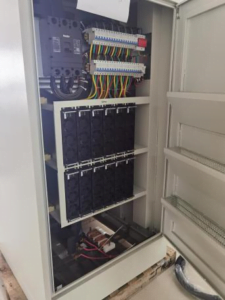
The structure of a DC charging station comprises the electrical components of the main circuit and the secondary circuit. The main circuit takes in three-phase alternating current (AC), passing through an input circuit breaker and an AC smart energy meter. Afterward, it undergoes conversion by the charging module (rectification module), transforming the three-phase AC into direct current (DC) suitable for the vehicle’s power battery. The circuit then connects to a fuse and the charging gun, delivering the charge to the electric vehicle’s on-board power battery.
The secondary circuit consists of the charging station controller, card reader, touch screen, DC ammeter, and other components. The secondary circuit also provides control for “start-stop” and emergency “stop” operations. Signal lights indicate “standby,” “charging,” and “full” states. The touch screen, serving as a human-machine interaction device, facilitates card swiping and charging mode settings. The controller communicates instructions such as “power on, power off, output voltage, output current,” to the charging module.
As a system integration product, the DC charging station’s structure, in addition to the “DC charging module” and “controller” as the two core components, is a critical aspect of reliability design for DC charging stations.
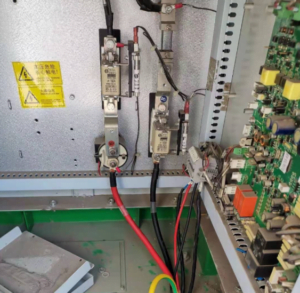
DC charger Output rating: 200V-1000V DC, the charger is fast charging, compatible with a wide range of electric vehicles, high efficiency, ideal for public charging stations and long distance travelling.
Global adaptability, can be more widely used in different regions, provide multi-language interface and guidance can improve the user experience, lower the threshold of use, so that more people can easily use the charging equipment.
Providing multi-language support for different regional and national regulations and standards helps to ensure that the DC charger complies with local regulations and rules, reducing potential compliance risks. Providing multi-language support also helps DC chargers to be more competitive in the international marketplace, meeting the needs of users in different cultural and linguistic environments.
Multi-language customisation also reflects the charger manufacturer’s focus on a diverse global market, enhancing brand image and improving brand awareness. It helps to build a stronger customer service system, provide more effective support and communication, and enhance customer satisfaction.
Extreme Environment Suitability: The wide storage temperature range allows the DC charger to operate in extreme cold or hot climates, adapting to the needs of different regions and climates.
RELIABILITY: While high and low temperature environments often pose challenges for electronic devices, the wide storage temperature range of -40°C to +70°C demonstrates the stability and reliability of the DC charger in a variety of climates.
Emergency Use: In the event of severe weather or emergencies, the DC charger’s storage temperature range allows it to be used in extreme temperatures, ensuring that EV owners can charge when they need to.
GLOBAL APPLICABILITY: The ability to withstand a wide range of temperatures makes the DC charger more suitable for use in different climatic zones around the world, increasing its adaptability to local markets. Reduced Equipment Failure: Resistance to cold and heat reduces the risk of DC chargers failing in extreme temperatures, increasing the stability and longevity of the equipment.
Interoperability Enhancement: OCPP is an industry-standard open protocol that supports communication between different charging devices and network platforms. By integrating OCPP, charging stations are able to interconnect with a wide range of devices and services, enabling broader compatibility and making it easier for them to integrate and work with devices from other providers in different environments. This openness helps to create a unified charging infrastructure that promotes the adoption of electric vehicles.
Optimisation of power utilisation: This technology uses intelligent algorithms to monitor the individual connected vehicles in the charging station and dynamically adjusts the distribution of power according to their charging needs. This ensures optimal utilisation of power resources and avoids over- or under-allocation of power. The result is more efficient charging stations that help to increase charging speeds, reduce waiting times, and minimise the impact on the electricity network.
Remote Diagnostics, Repair, and Updates: Real-time troubleshooting: Charging stations are equipped with remote monitoring and diagnostic capabilities that allow for quick identification of equipment malfunctions or performance degradation through real-time data monitoring. Operators can perform fault analysis remotely, shortening troubleshooting time and reducing equipment downtime. Software Updates and Upgrades: The system can be updated and upgraded remotely without the need for on-site intervention. This allows the charging station to remain up-to-date with changes in technology and safety standards, improving system stability and safety.
System integration: DC chargers can be easily connected to the charging points management system for real-time monitoring, data analysis and remote management. This connectivity enables operators to centrally manage the entire charging network, monitoring the status, maintenance needs and usage of charging stations. This helps to improve the operational efficiency of charging stations, optimise resource utilisation and provide more flexible services.
Logo Design: Customised brand logos and logos to highlight your company’s uniqueness.
Colour Options: Enclosure colours can be customised to match your brand’s primary colours to maintain a consistent brand image.
Material Options: Depending on the requirements, different housing materials can be selected, such as plastic, metal, etc., to meet the needs of design and durability.
Design: Customise the overall appearance and structure of the enclosure to suit specific market needs or to match the company’s design philosophy.
Warning labels: Identify safety warning labels on the charging post to ensure proper use by the user.
Waterproof and Dustproof: Protective design for the charging station’s environment to ensure that the equipment can work properly even in bad weather conditions.
Customised labels and nameplates:
Product information labels: Customised labels include information such as product model and technical specifications to meet market regulations and standards.
Compatibility and versatility:
Charging gun interface: Design universal charging gun interface to adapt to different models of EVs.
Multi-Country Compatibility: Design universal charging post considering specifications and standards of different countries and regions.
In summary, following our comprehensive introduction of the DC charging station, it’s clear that our product is exceptionally versatile, capable of accommodating the vast majority of charging scenarios. With support for various customization options, it stands out as the optimal choice for charging station operators. Our DC charging station not only meets the diverse needs of electric vehicles but also offers flexibility and reliability, making it a superior solution in the market. Whether for commercial or private use, our charging station represents a forward-thinking choice for operators looking to deliver top-tier charging services.

Hey, I’m Daisy Dai, the author of the post , 3 years EV field experience, I have sold many DC charging stations to many charge operator, we accept any customzation for your special request, feel free to contact us to custmize your demands , info@honorsev.com
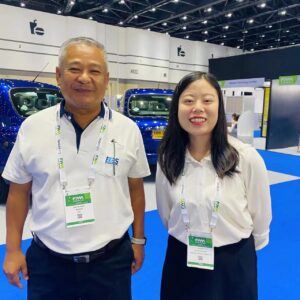
Hey, I’m Daisy Dai, the author of the post , 3 years EV field experience, I have sold many DC charging stations to many charge operator, we accept any customzation for your special request, feel free to contact us to custmize your demands , info@honorsev.com
Thanks for your interest, your inquiry will be responded within 24 hours.